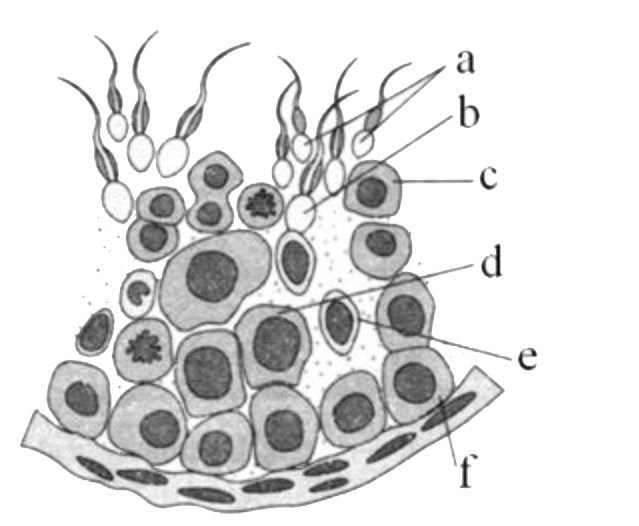Formation of primary spermatocyte/ oocyte from a spermatogonium/oogonium requires
Mitosis
Melosis I
Meiosis II
Growth.
The correct Answer is:D
To answer the question regarding the formation of primary spermatocytes or oocytes from spermatogonia or oogonia, we can break down the process step by step:
1. Understanding the Germ Cells:
- Spermatogonia are the immature male germ cells found in the testes, while oogonia are the immature female germ cells found in the ovaries.
2. Process of Spermatogenesis and Oogenesis:
- Both spermatogenesis (formation of sperm) and oogenesis (formation of eggs) involve a series of developmental stages.
3. Mitosis in Germ Cells:
- Spermatogonia undergo mitosis to increase their numbers. This is the first step in both spermatogenesis and oogenesis, where the germ cells multiply.
4. Formation of Primary Spermatocytes and Oocytes:
- After several rounds of mitotic division, some spermatogonia differentiate into primary spermatocytes, while oogonia differentiate into primary oocytes. This differentiation requires growth and maturation of the cells.
5. Role of Growth:
- The transition from spermatogonia to primary spermatocytes and from oogonia to primary oocytes is primarily driven by growth. This growth phase is crucial as it prepares the cells for the subsequent meiotic divisions.
6. Conclusion:
- Therefore, the formation of primary spermatocytes from spermatogonia and primary oocytes from oogonia requires growth.
Final Answer:
- The correct answer is D) Growth.
- Spermatogonia are the immature male germ cells found in the testes, while oogonia are the immature female germ cells found in the ovaries.
- Both spermatogenesis (formation of sperm) and oogenesis (formation of eggs) involve a series of developmental stages.
- Spermatogonia undergo mitosis to increase their numbers. This is the first step in both spermatogenesis and oogenesis, where the germ cells multiply.
- After several rounds of mitotic division, some spermatogonia differentiate into primary spermatocytes, while oogonia differentiate into primary oocytes. This differentiation requires growth and maturation of the cells.
- The transition from spermatogonia to primary spermatocytes and from oogonia to primary oocytes is primarily driven by growth. This growth phase is crucial as it prepares the cells for the subsequent meiotic divisions.
- Therefore, the formation of primary spermatocytes from spermatogonia and primary oocytes from oogonia requires growth.
- The correct answer is D) Growth.
Topper's Solved these Questions
Similar Questions
Knowledge Check
- Question 1 - Select One
How many sperms are formed from 4 primary spermatocytes?
A4B1C16D32
In spermatogenesis, a primary spermatocyte produce four similar sperms while in oogenesis a primary oocyte forms
View SolutionHow many structures in the list given below are haploid?
Spermatid, secondary oocyte, primary spermatocyte, ovum, sperm, oogonia, spermatogonia, polar bodyView SolutionRecognize the figure and find out the CORRECT labeling.

(a) a -spermatozoa, b - spermatid, c - primary spermatocyte , d - secondary spermatocyte , e - spermatogonia , f - sertoli cell
(b) a -spermatozoa, b - spermatid, c - secondary spermatocyte , d - primary spermatocyte - Sertoli cell , f - spermatogonia
(c) a -spermatozoa, b - spermatid, c - primary spermatocyte , d - secondary spermatocyte , e - spermatogonia , f - sertoli cell
(d) a -spermatozoa, b - spermatid, c - secondary spermatocyte , d - primary spermatocyte - Sertoli cell , f - spermatogoniaView SolutionSperms formed from four primary spermatocytes are:
View SolutionPrimary root originates from :-
View SolutionDraw a diagrammatic sectional view of a human seminiferous tubule, and label sertoli cells, primary spermatocyte, sperm-atogonium and spermatozoa init.
b) Explain the hormonal regulation of the process of spermatogenesis in humans.View SolutionDraw a labelled diagram of the sectional view through a small part of seminiferous tubule of testis and label Sertoli cells, primary spermatocytes, spermatogonium and spermatozoa.
View Solution

